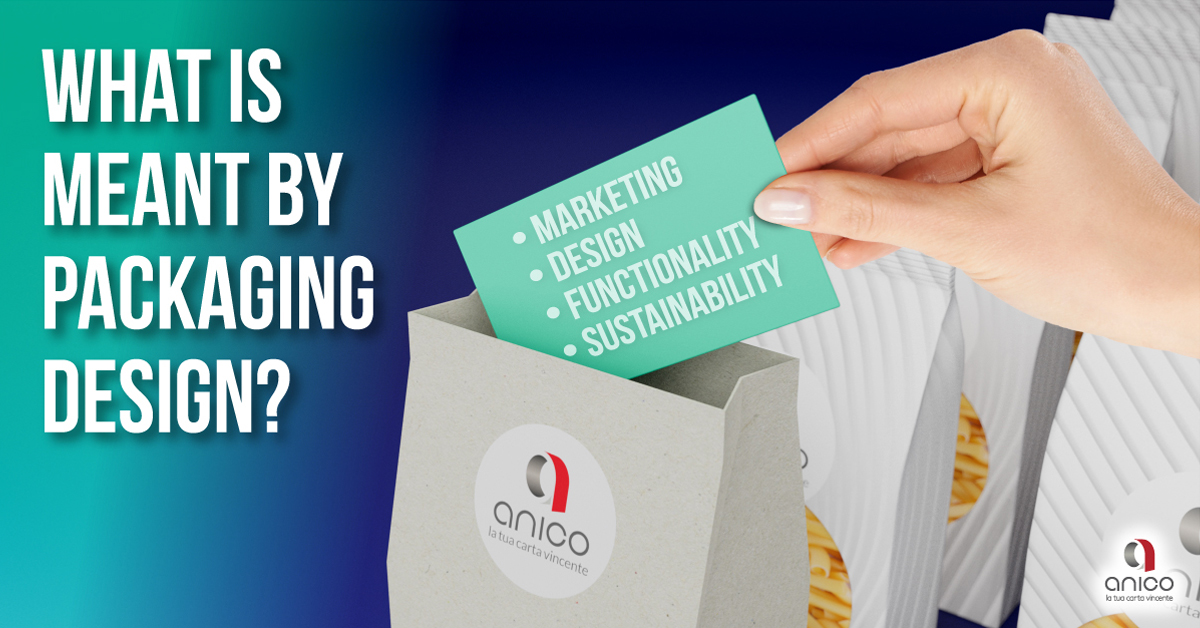What is meant by packaging design?
In the concept of packaging there is not only a container for the preservation and sale of a product, but also a useful tool for the sale of the product itself.
This complexity has given rise to what can be considered in all respects a new branch of marketing and which is defined as packaging design.
We can therefore define packaging design as:
the set of study activities aimed at creating a package or package that is capable of attracting the attention of the consumer or user of the product.
Product marketing that comes from its packaging
Packaging design is particularly effective when it is studied on new products and is indicated in rebranding or repositioning operations of the product on the market.
However, before delving further into packaging design it is necessary to remember the difference between packaging and packaging.
The packaging is functional for the conservation of a product and its transport.
Packaging, on the other hand, in addition to fulfilling the same function, is more complex because it also concerns the following aspects:
- intangible
- industrial
- aesthetic
Therefore, is not simple container, but is an integral part of your product and how it will be perceived by the consumer.
Packaging design is therefore the study, design and creation of a pack, from which the word packaging derives, to enhance your product and make it different and recognizable among all those of other manufacturers.
One of the main functions of packaging design is therefore to give the producer the opportunity to "drop" his product into the consumer's cart and then the packaging becomes "self-selling".
The aesthetic functionality of packaging design made in Italy
In the current era of extreme competitiveness and globalization, making space among the competition and attracting the consumer's attention is increasingly difficult.
Packaging design made in Italy, designed and studied to be a "self-selling packaging", can prove to be the key to the success of a product and prove successful.
However, packaging design and therefore packaging design, in addition to having an aesthetic value, must:
- follow the legal principles of labelling, informing the consumer on the nutritional elements, methods of use and characteristics of the product;
- stand out from other products and capture the consumer's attention with colours, fonts, shapes, materials, etc.;
- be consistent with the brand mood of the product contained therein;
In this way the packaging acquires a strategic connotation of an informative and persuasive tool, capable of making your product stand out compared to those of your competitors.
The data collected by the Osservatorio Immagino highlight that Italianness is common to 25.2% of the products on the shelf and accounts for 24.4% of the turnover of large-scale consumption: one in four items purchased within large-scale retail trade reports on the The label is a reference toour “Belpaese”, with a total turnover of more than 7 billion euros.
Packaging design: the function of the material
When creating new packaging we have seen that it is important to pay attention to the "aesthetic" function, but it is always essential to keep in mind its primary function of:
- containing
- protecting
- keeping
the product and this is the reason why packaging design must reconcile the aesthetic function with the material which the packaging is made of.
Packaging design: and market
The market is also a factor to take into consideration when working on packaging design.
Did you know, for example, that 48% of consumers would avoid purchasing from retailers who do not actively work to reduce the use of non-recyclable plastic packaging? So to sell more products you have to create "self-selling packaging" and therefore dress your product in the most correct way.
To do what we previously mentioned, one of the emerging and most promising approaches is the development of up to 100% paper packaging, which not only responds to the growing environmental demands of consumers but also positions itself as a strong brand differentiator in the competitive market.
Packaging design: and sustainability
Paper, completely recyclable and derived from renewable resources, offers an ecological alternative to synthetic and often non-recyclable materials such as plastic.
Companies that invest in this innovation not only gain an advantage in terms of image and social responsibility, but can also take advantage of the flexibility and versatility of cardboard and paper.
Paper-based materials allow a vast range of customizations both in terms of shape and graphics, making packaging a truly strategic marketing tool. Progress in paper treatment and lamination technologies has further expanded the possibilities of use, making paper resistant to humidity and more robust, also suitable for products that previously depended exclusively on plastic packaging.
Conclusions
In the end, packaging design is a strategic process that contemplates various issues ranging from product conservation to its transferability, without forgetting the potential and impact it has on the market.
Finally, 100% paper packaging is not only a response to environmental pressures but represents a prudent choice for companies that aim to stand out in a market increasingly sensitive to sustainability, while ensuring innovation and functionality in packaging design.
With us at Anico you will be able to have a partner with whom you can best develop all the fundamental functions of your packaging, to stand out in the current competitive market and create the right relationship with your consumers.

